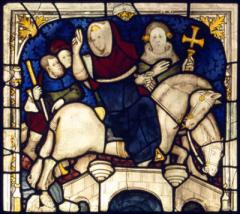St William of York

Archbishop. A patron saint of victims of injustice. William of York's early career in the church was very successful. As a young man in 1130, he was appointed treasurer of York and chaplain to King Steven. He was known as a kind and good-natured person. When the Archbishop of York died, the authorities chose William as his successor. From that time on things went badly wrong, as he became the innocent victim of malicious gossip. Bernard and the Yorkshire Cistercians accused him of a number of wicked deeds shortly before he was to be installed as Archbishop of York. This set off a wrangle that was to last for years.
William retired to Winchester and lived devoutly as a monk until 1153, when his name was cleared. Enormous crowds greeted him when he returned to York. But he died suddenly, possibly of poisoning, just a month later.
He was buried in his cathedral and many miracles began to be reported at his tomb. Pope Honorius II appointed the monks of Fountains and Rievaulx to investigate his life and miracles. He was canonised in 1227. In 1421 the famous St William window was made, depicting his life, death, translation and miracles in 62 scenes.
St William's shrine flourished for centuries. It was destroyed during the Reformation. Some pieces have since been excavated and are now in the collection of the Yorkshire Museum, York.
St William's tomb is still in the Minster. His stone coffin was actually a reused Roman sarcophagus, although the top is modern. On St William's day, in June, small services are still held in the Western Crypt, and the area around the tomb is used as an area of quiet reflection.
A few modern churches are named after him.












